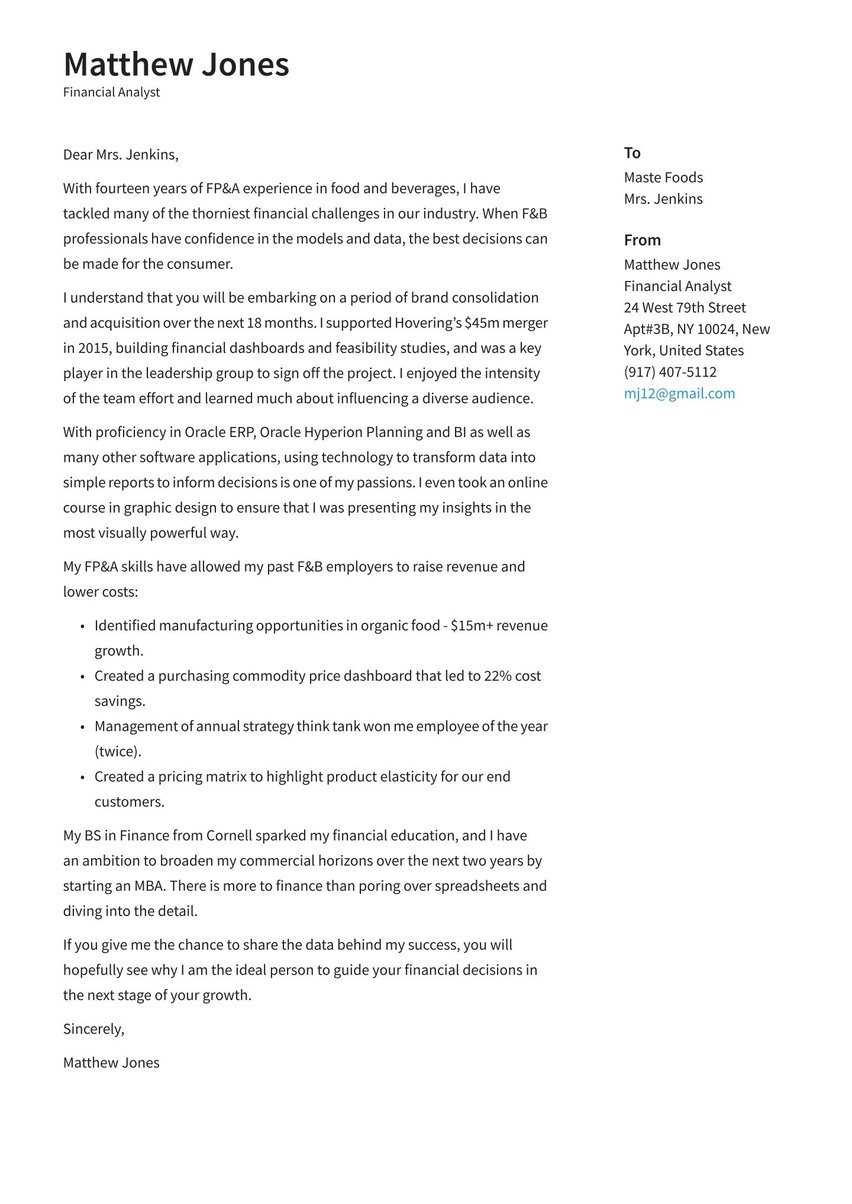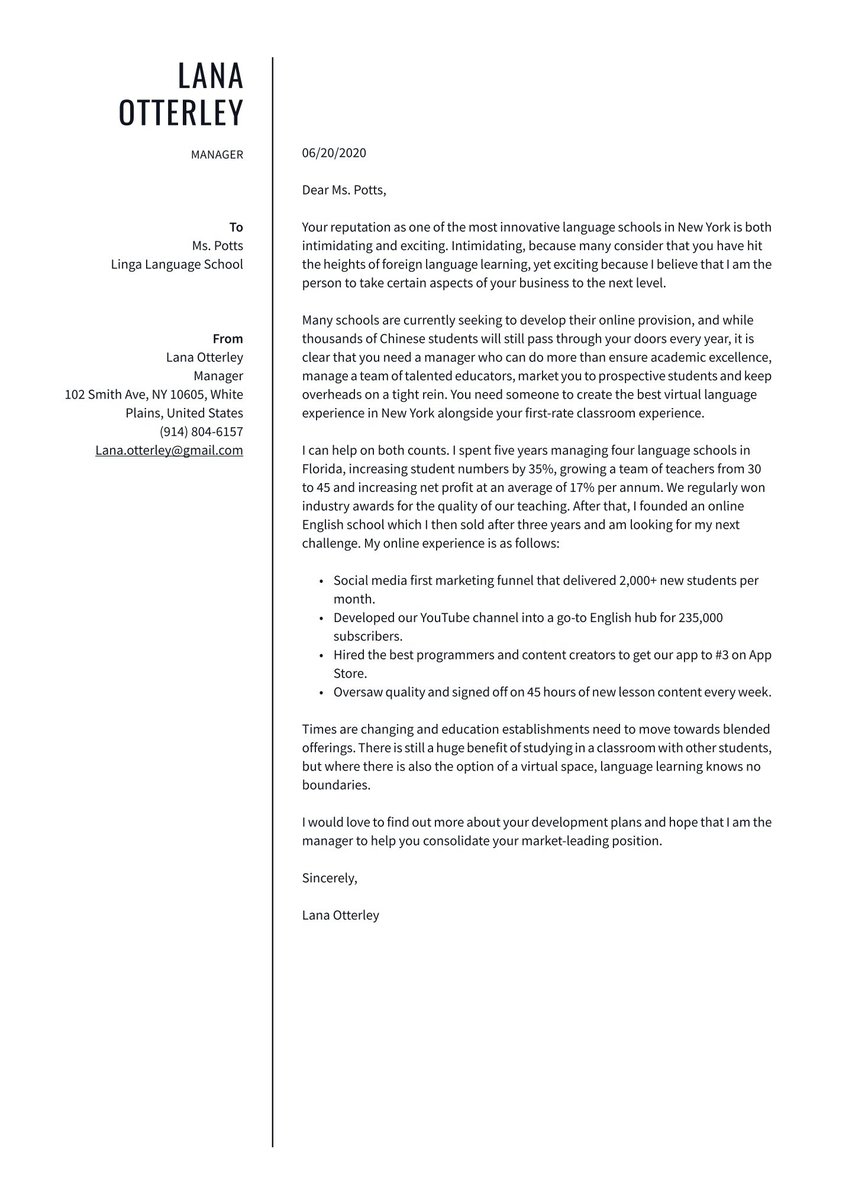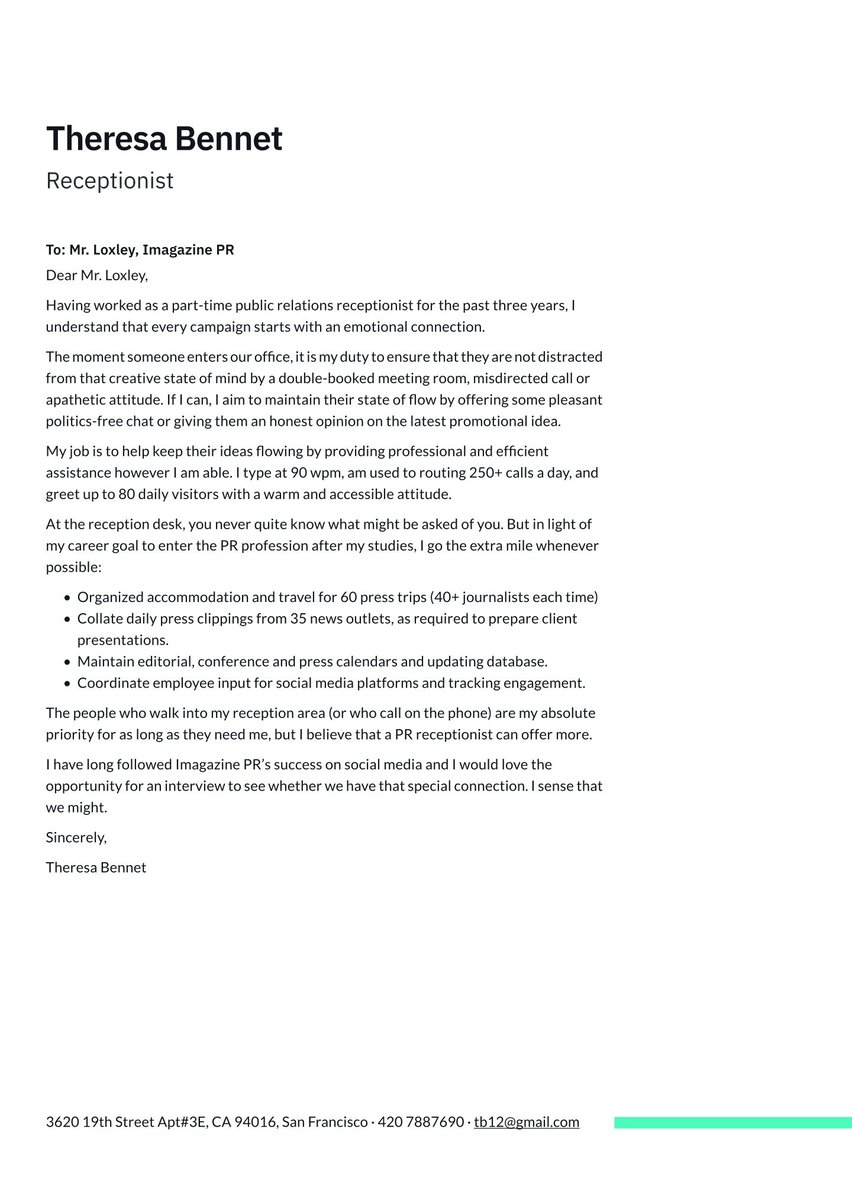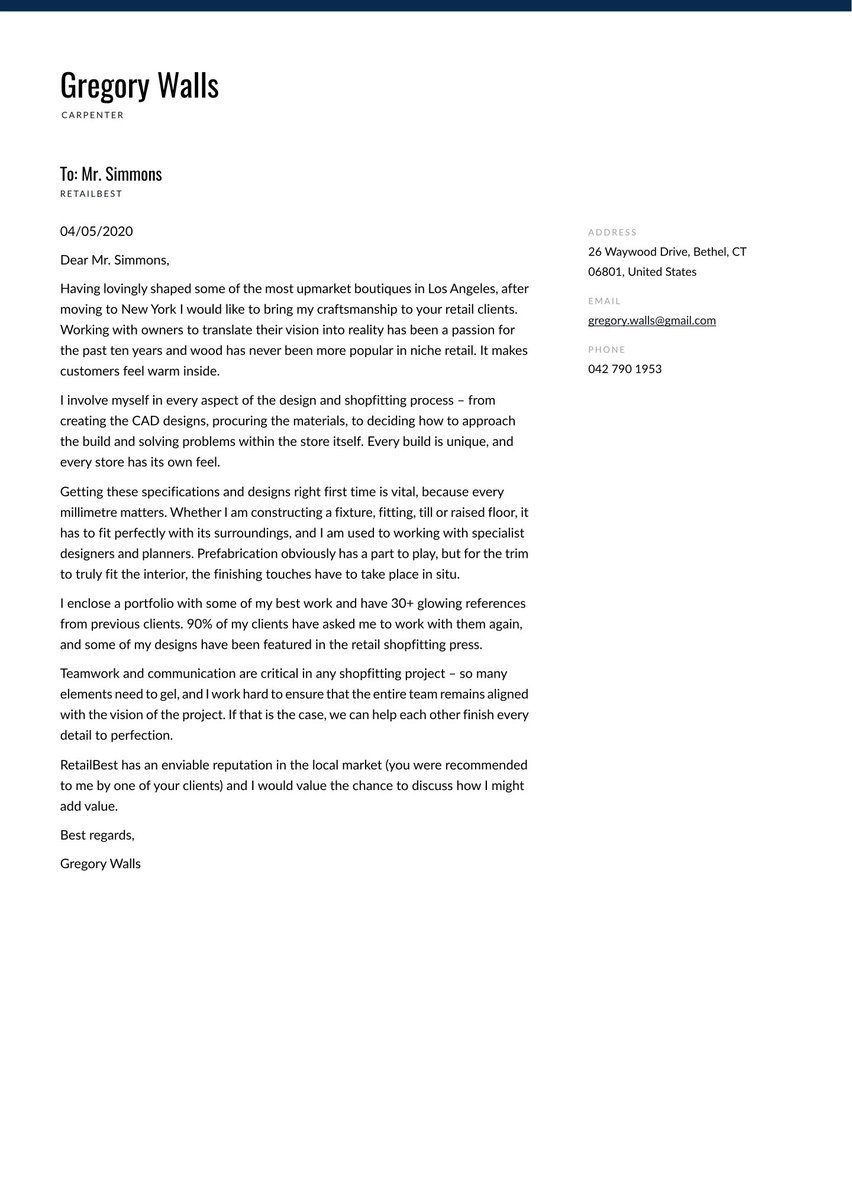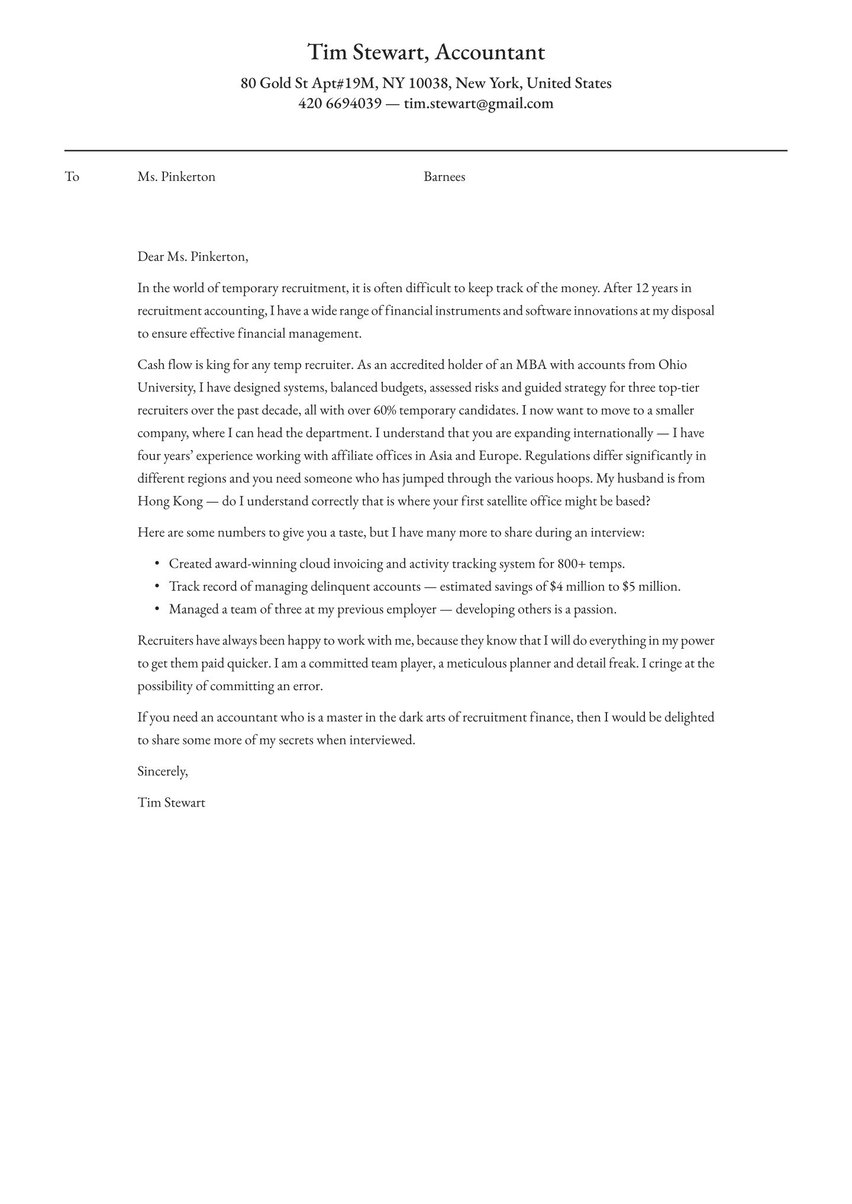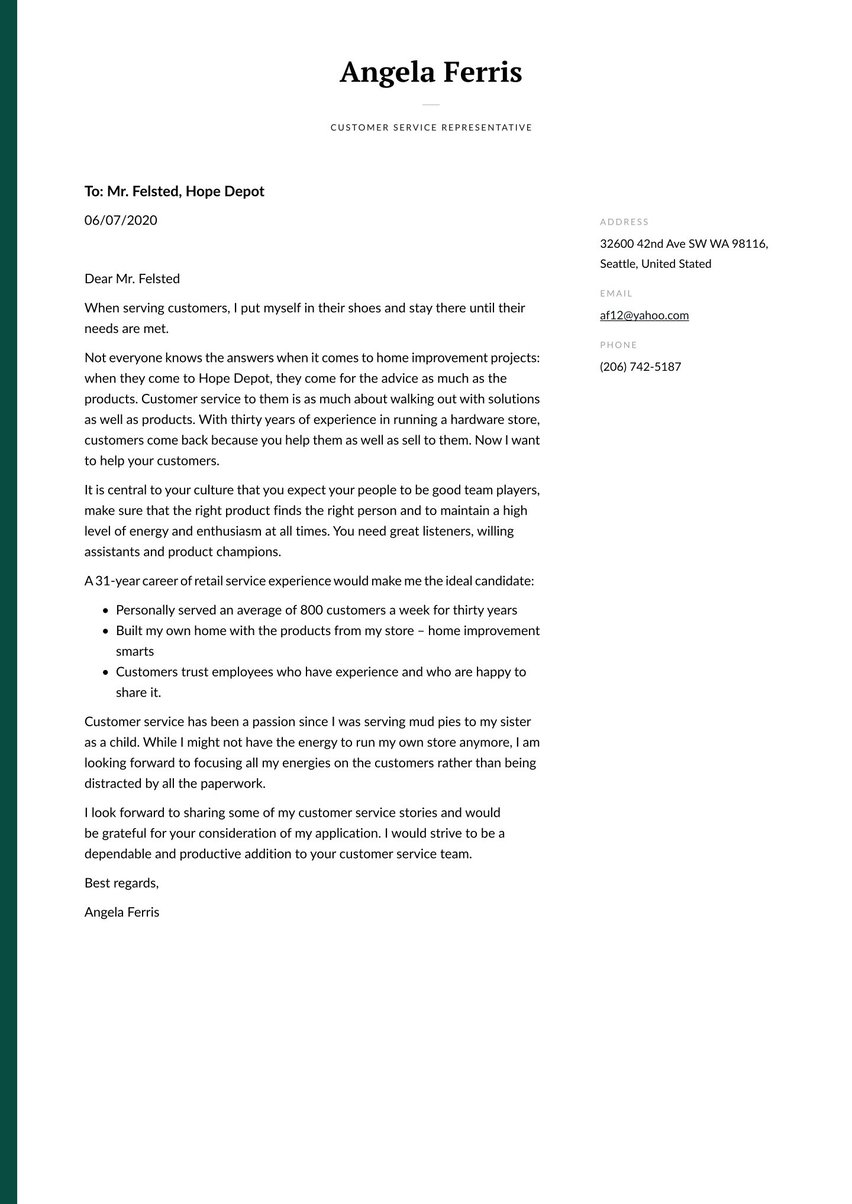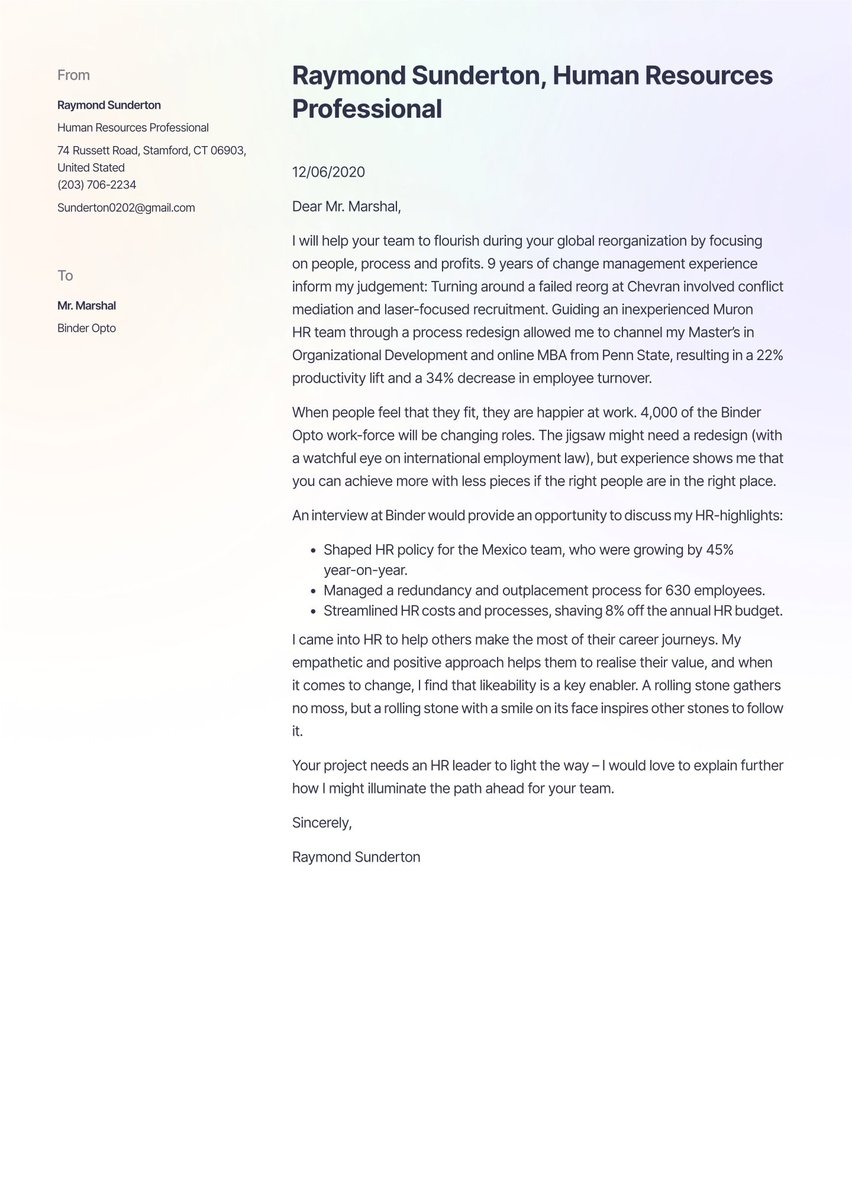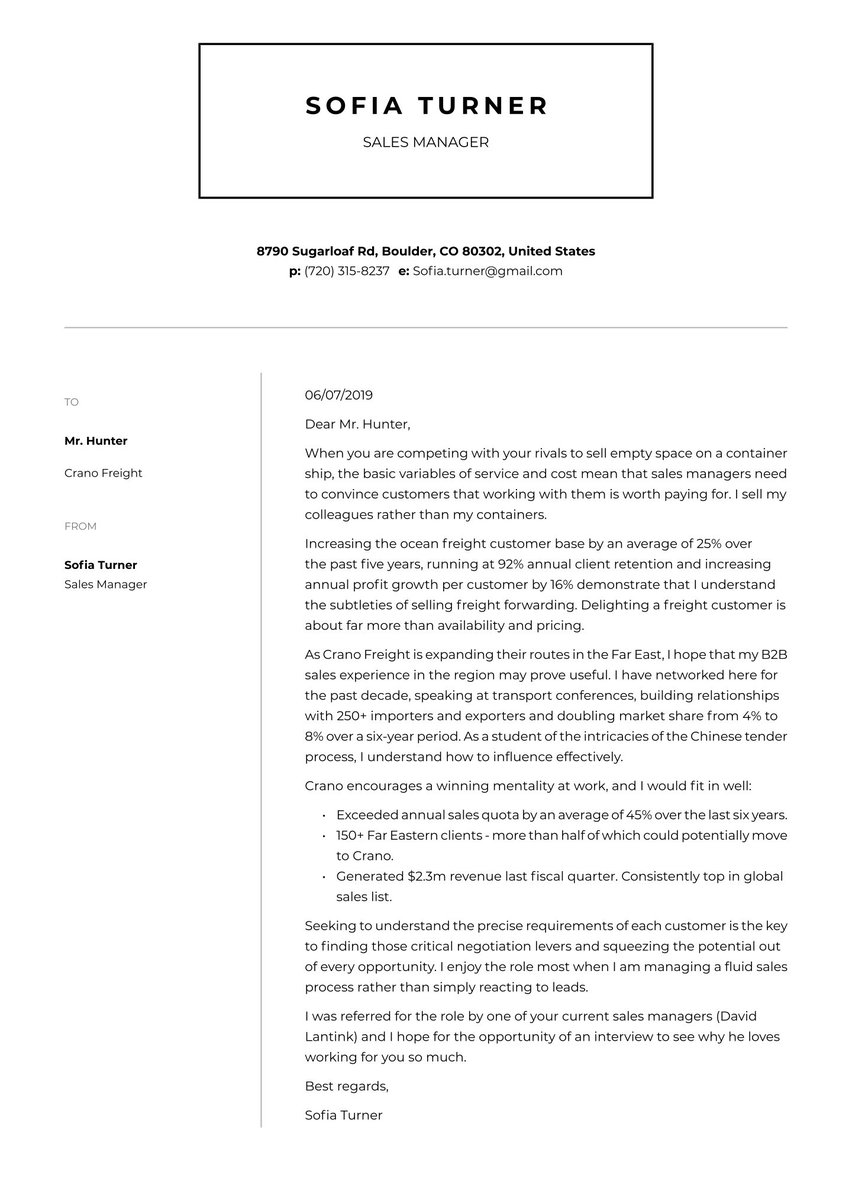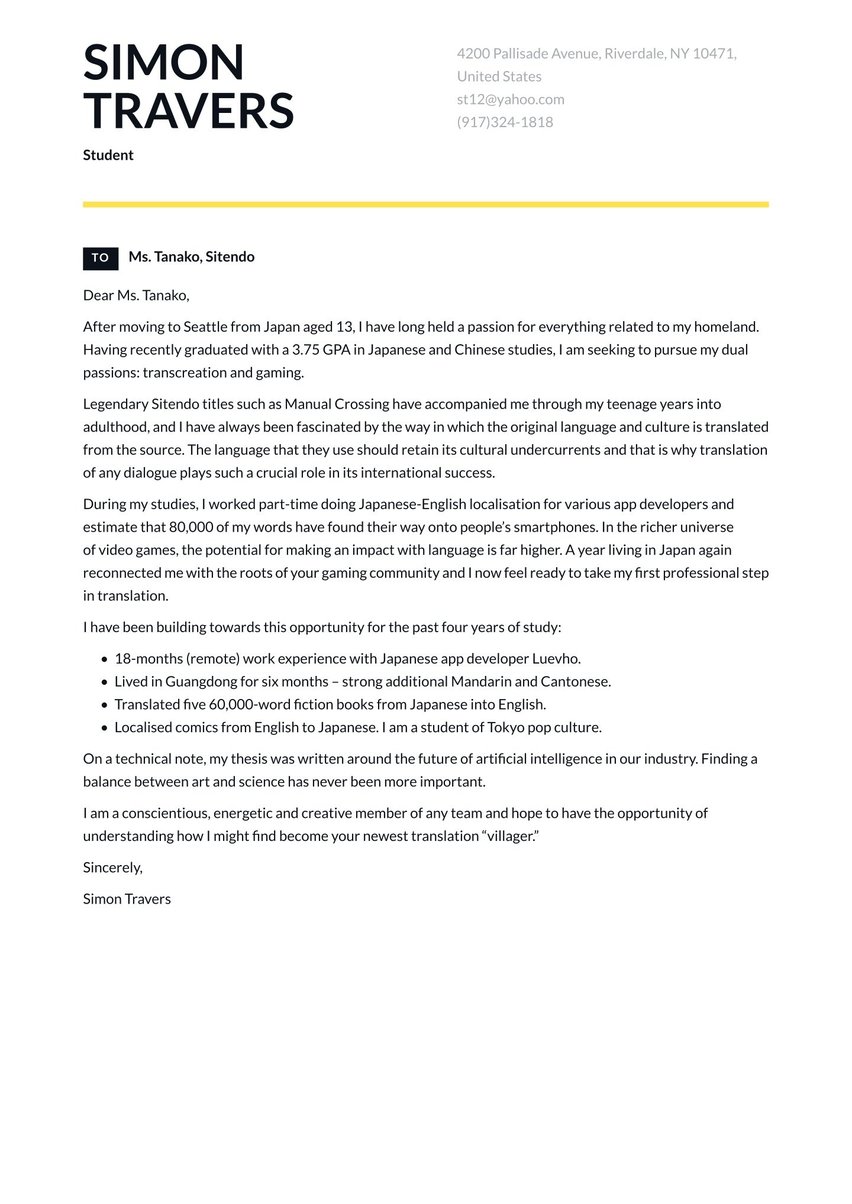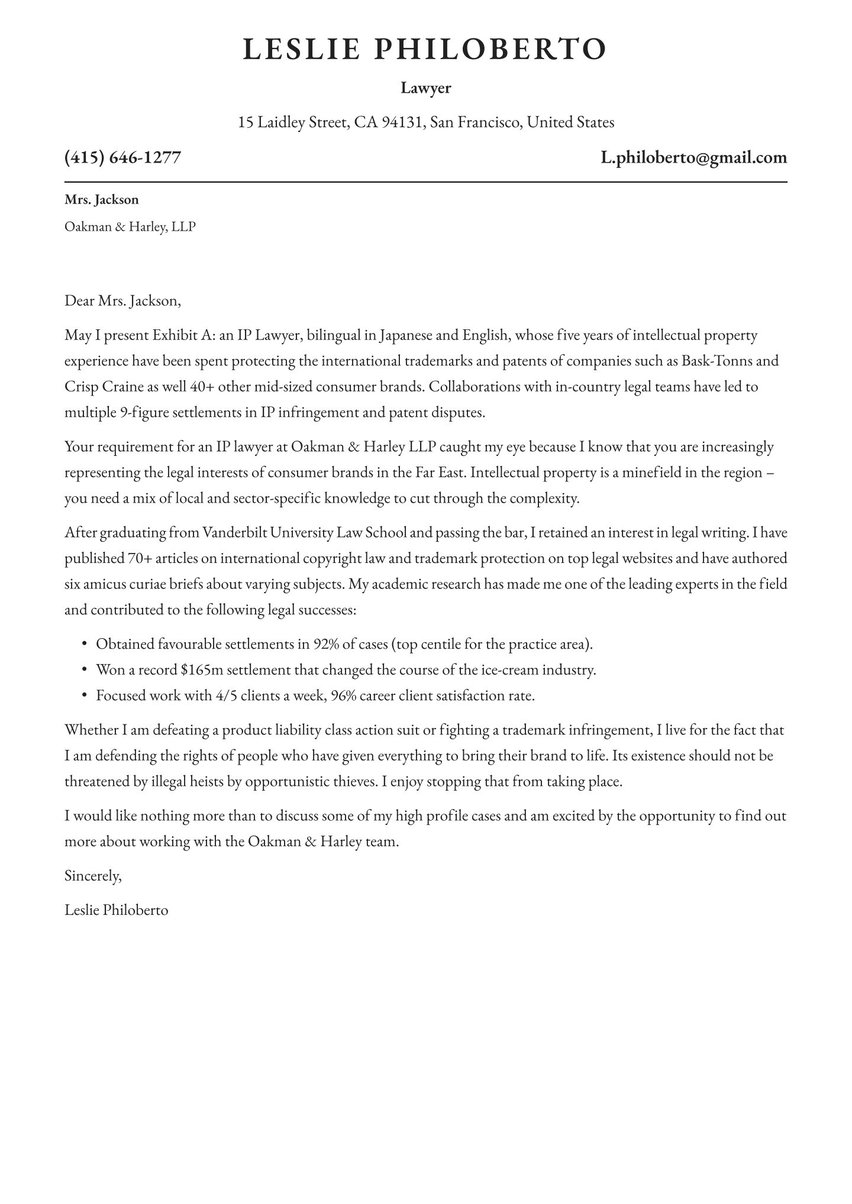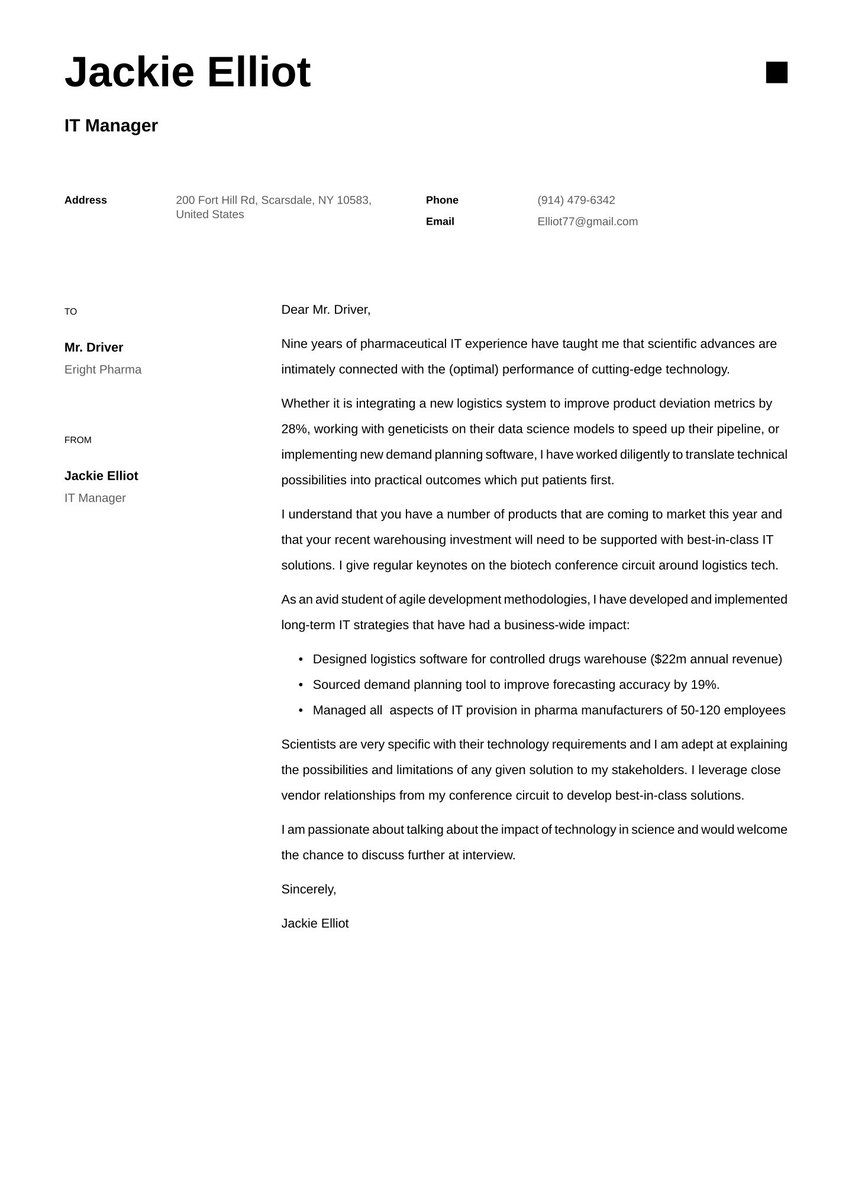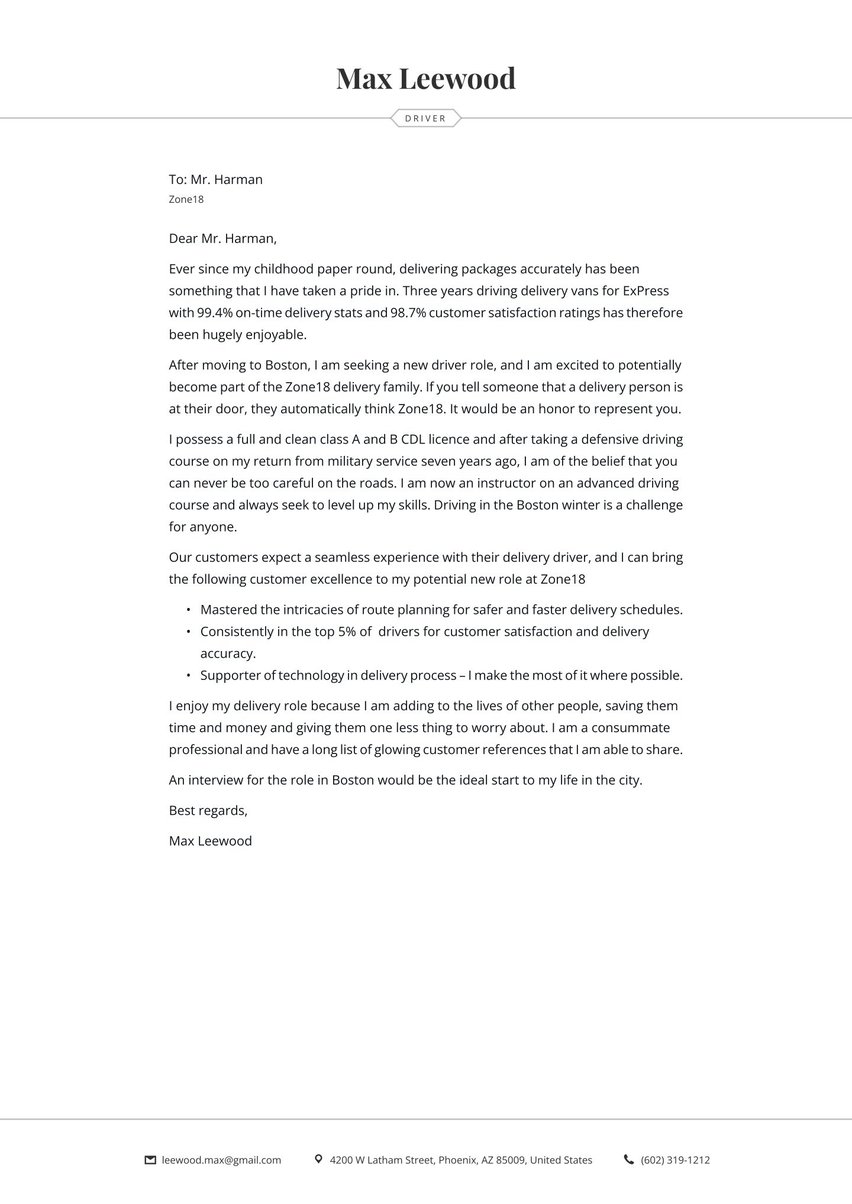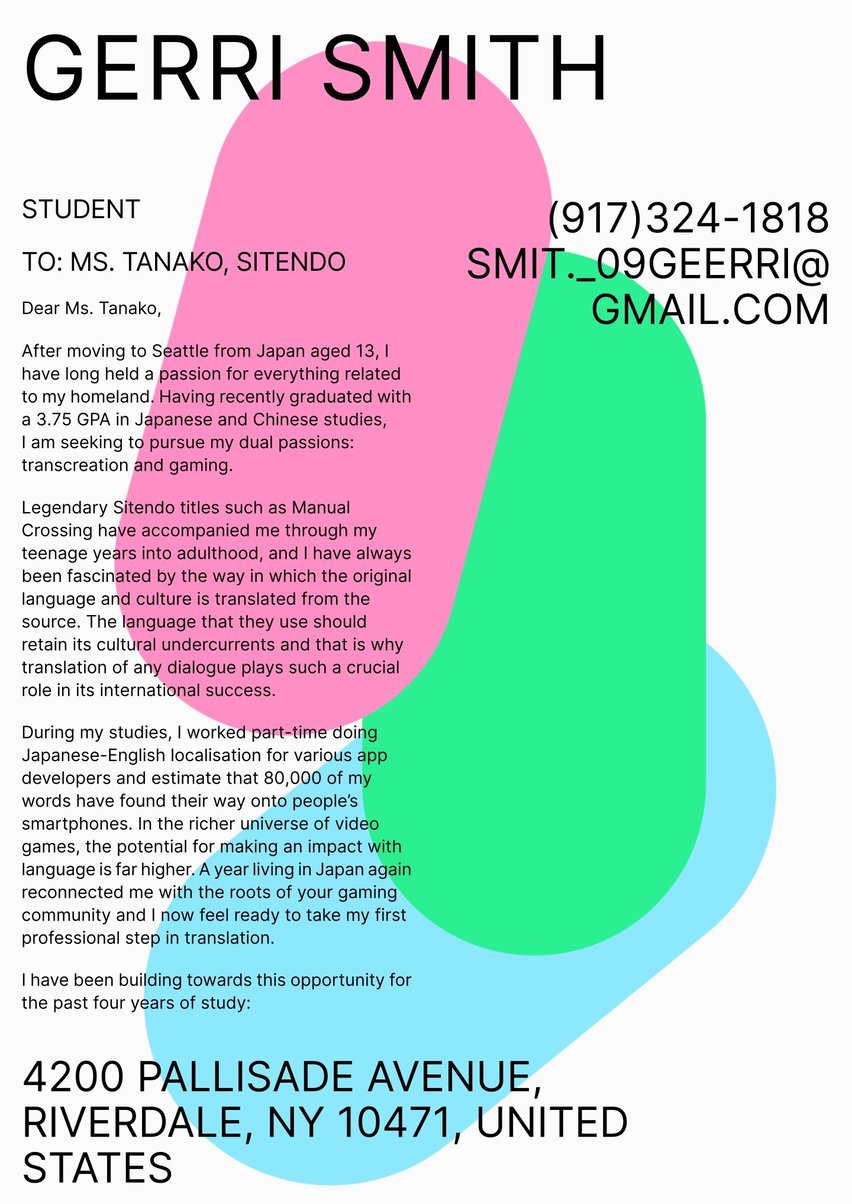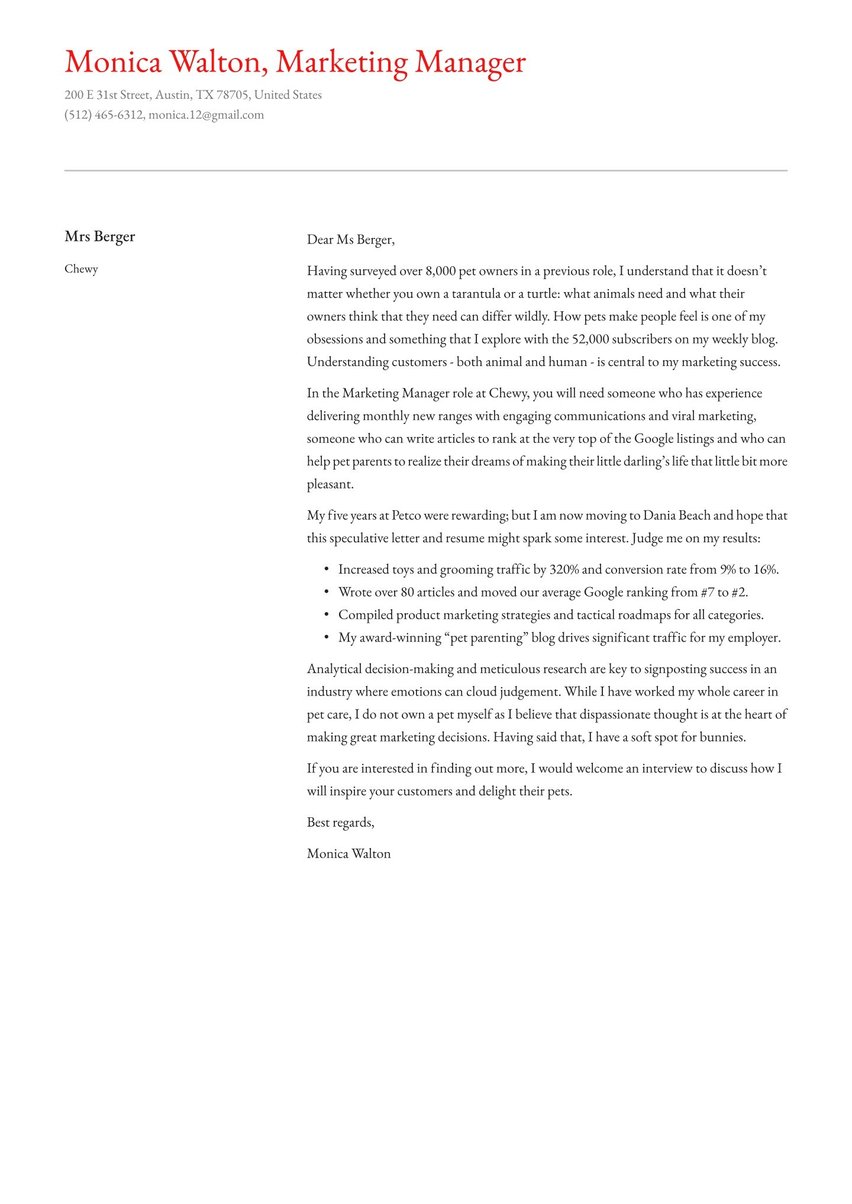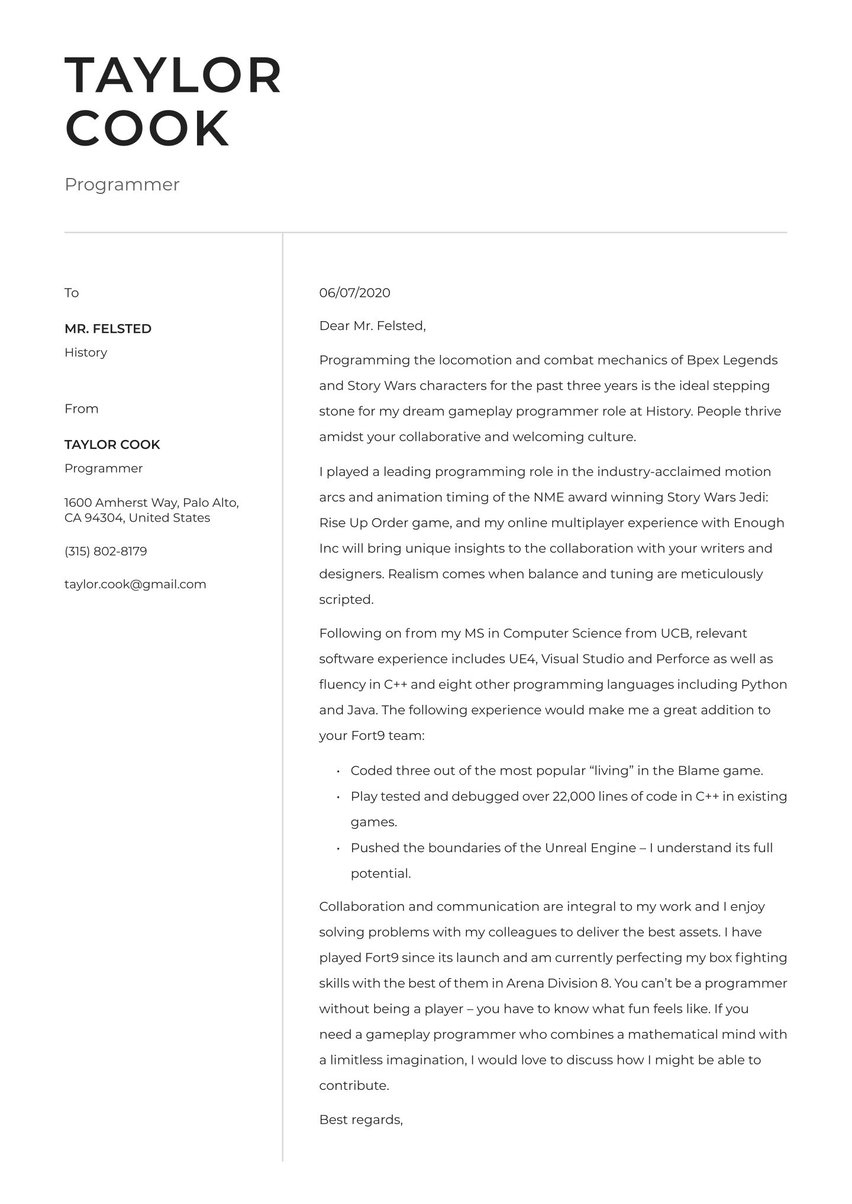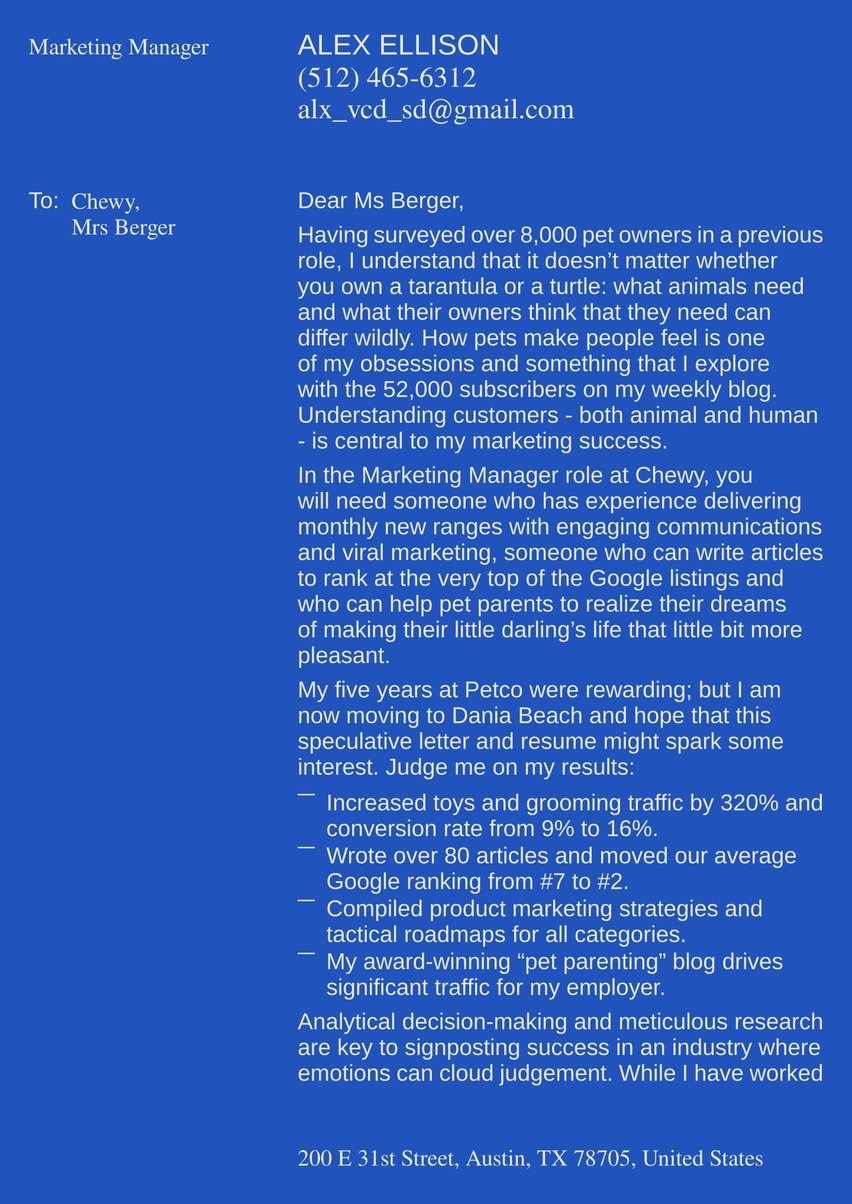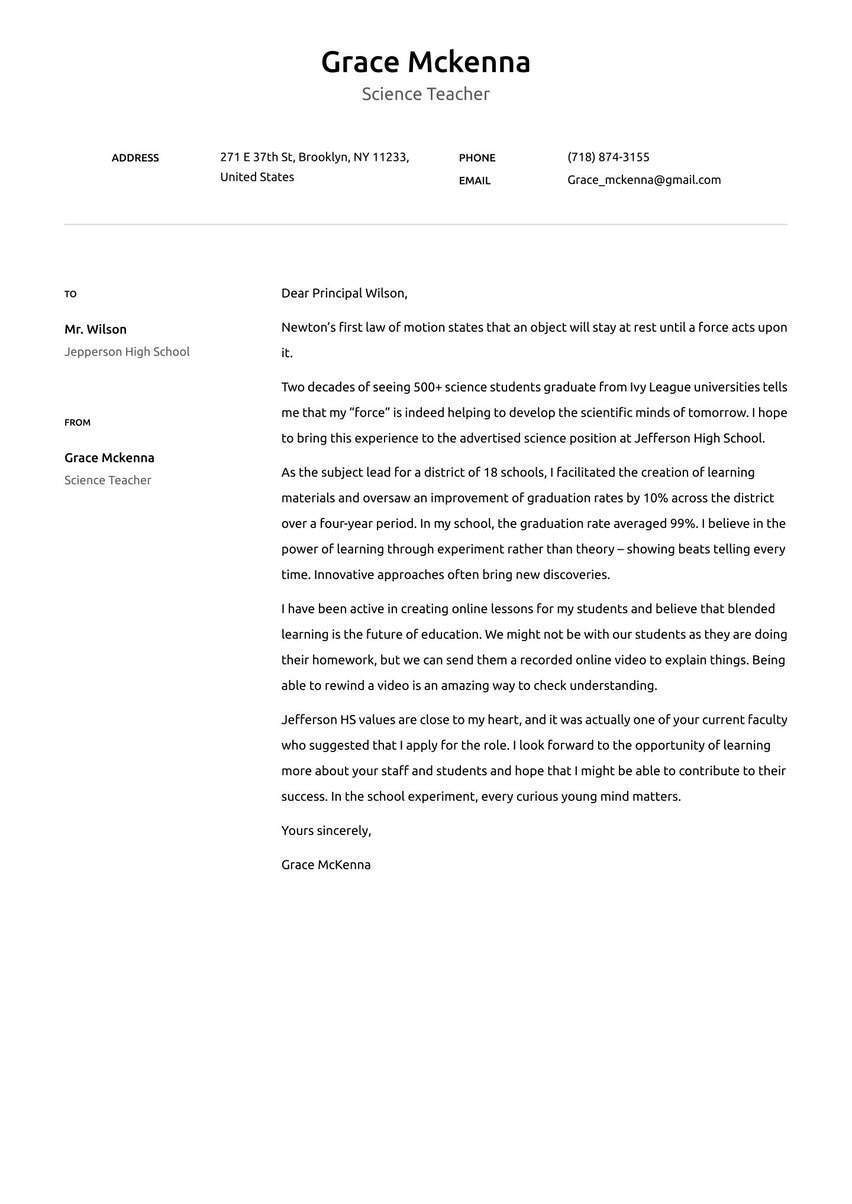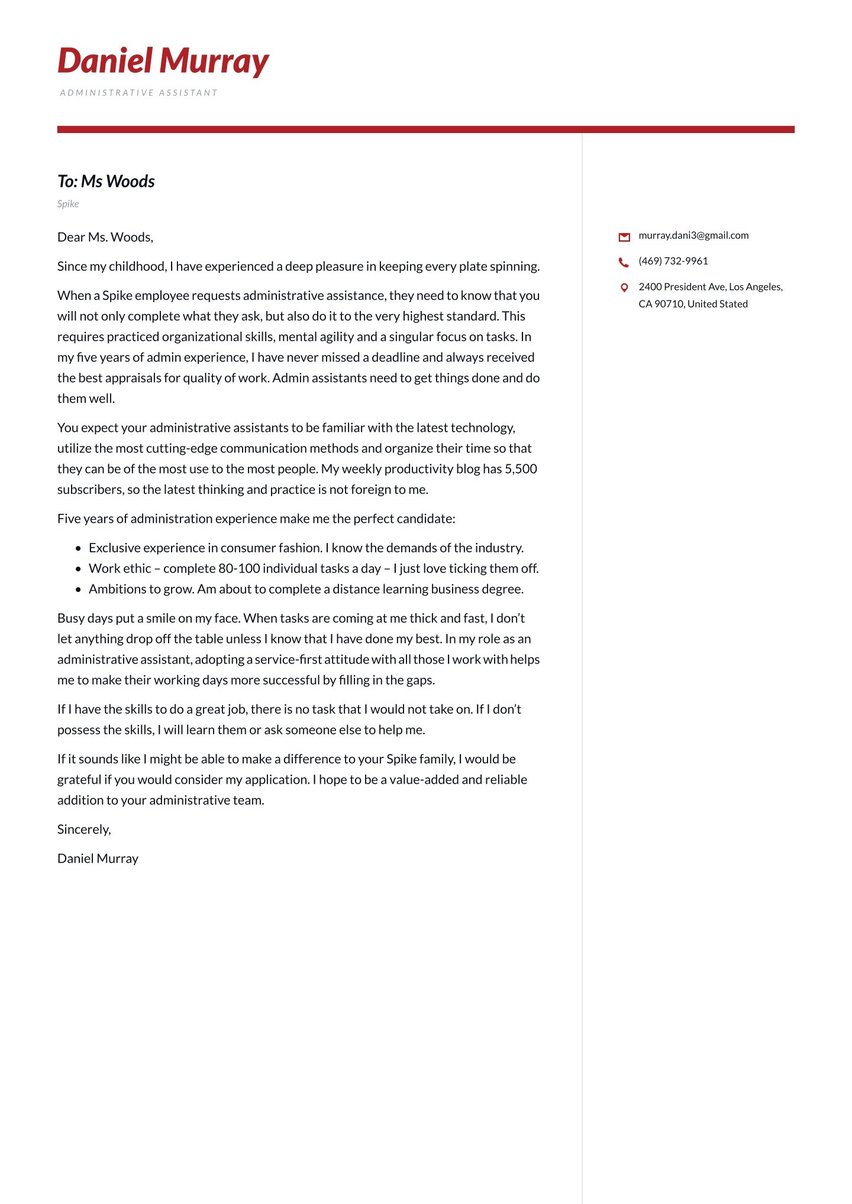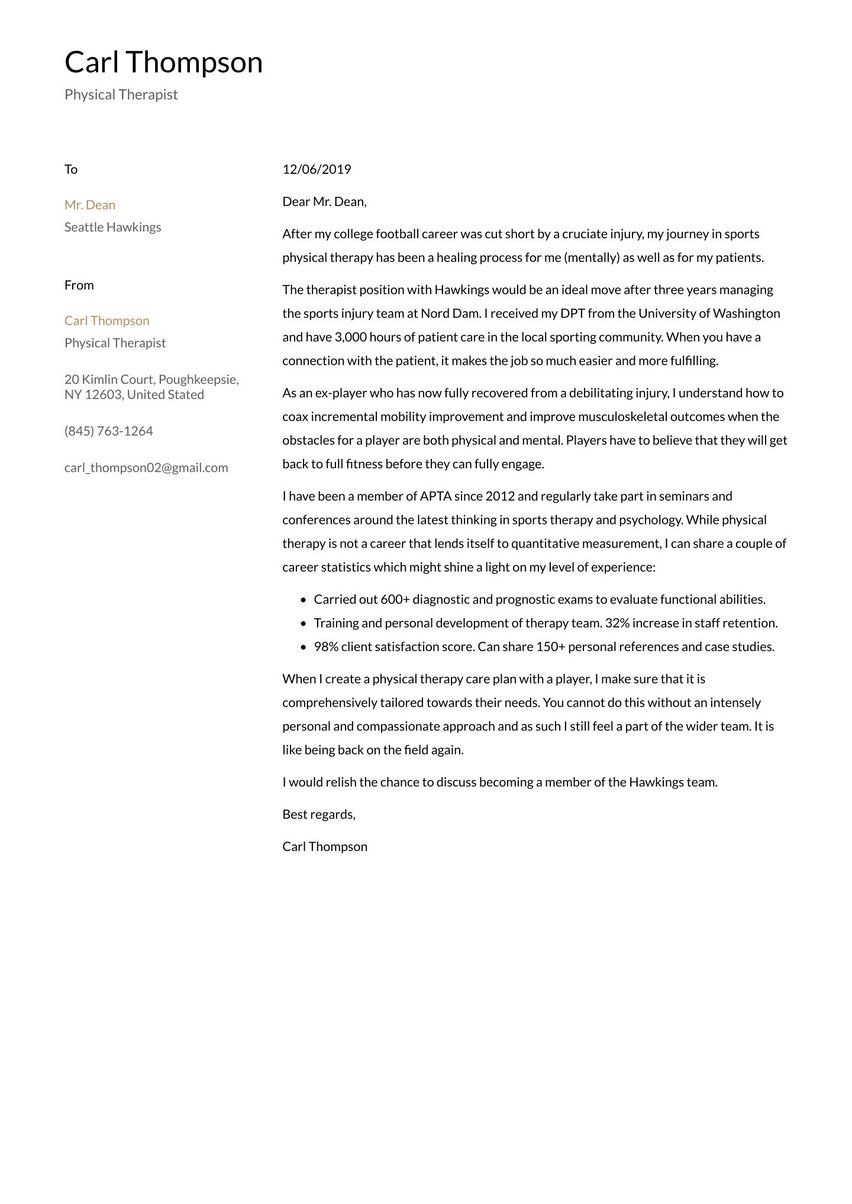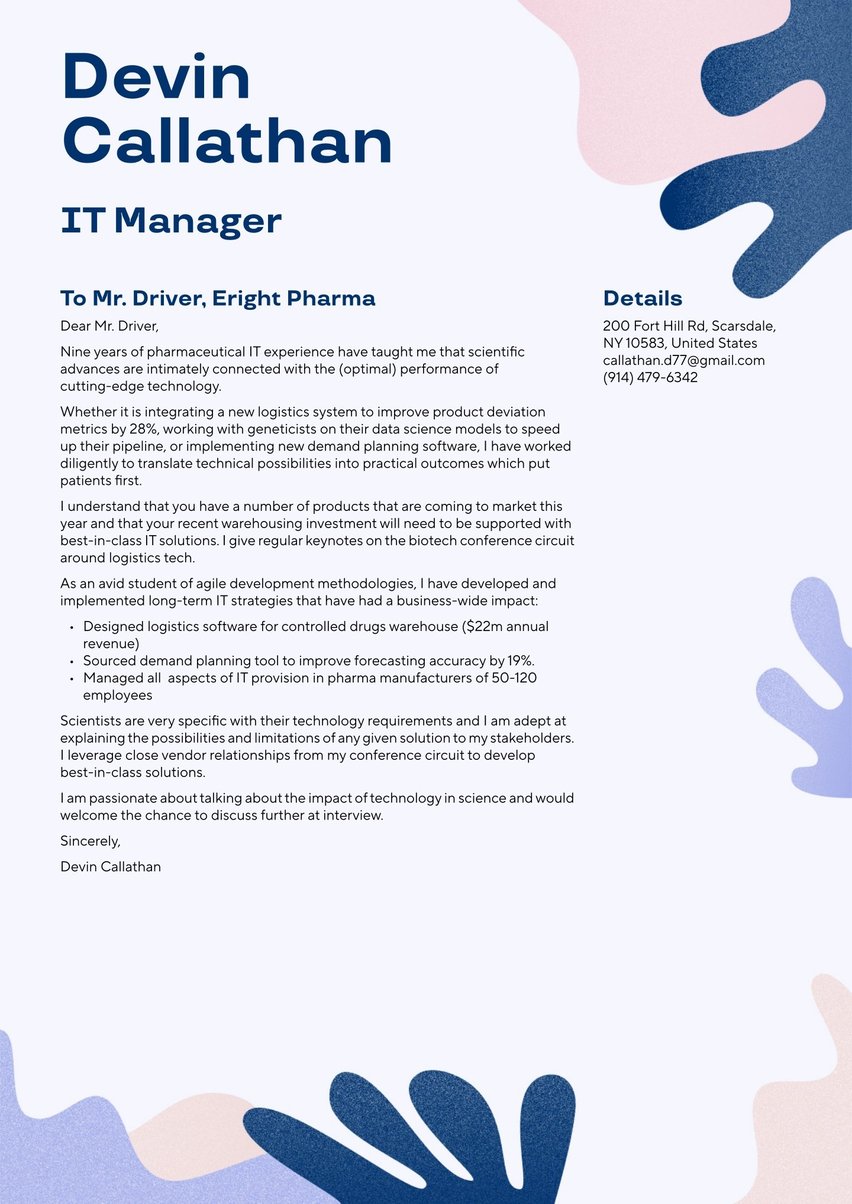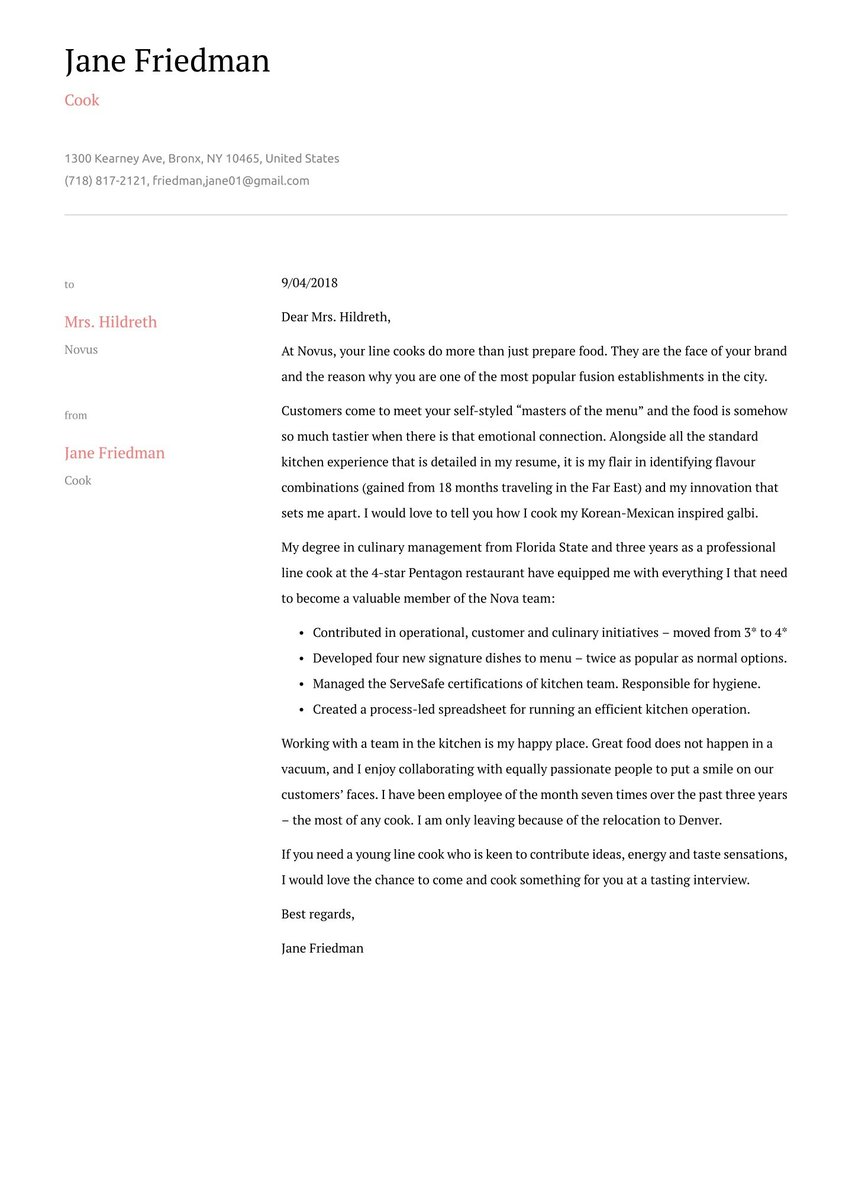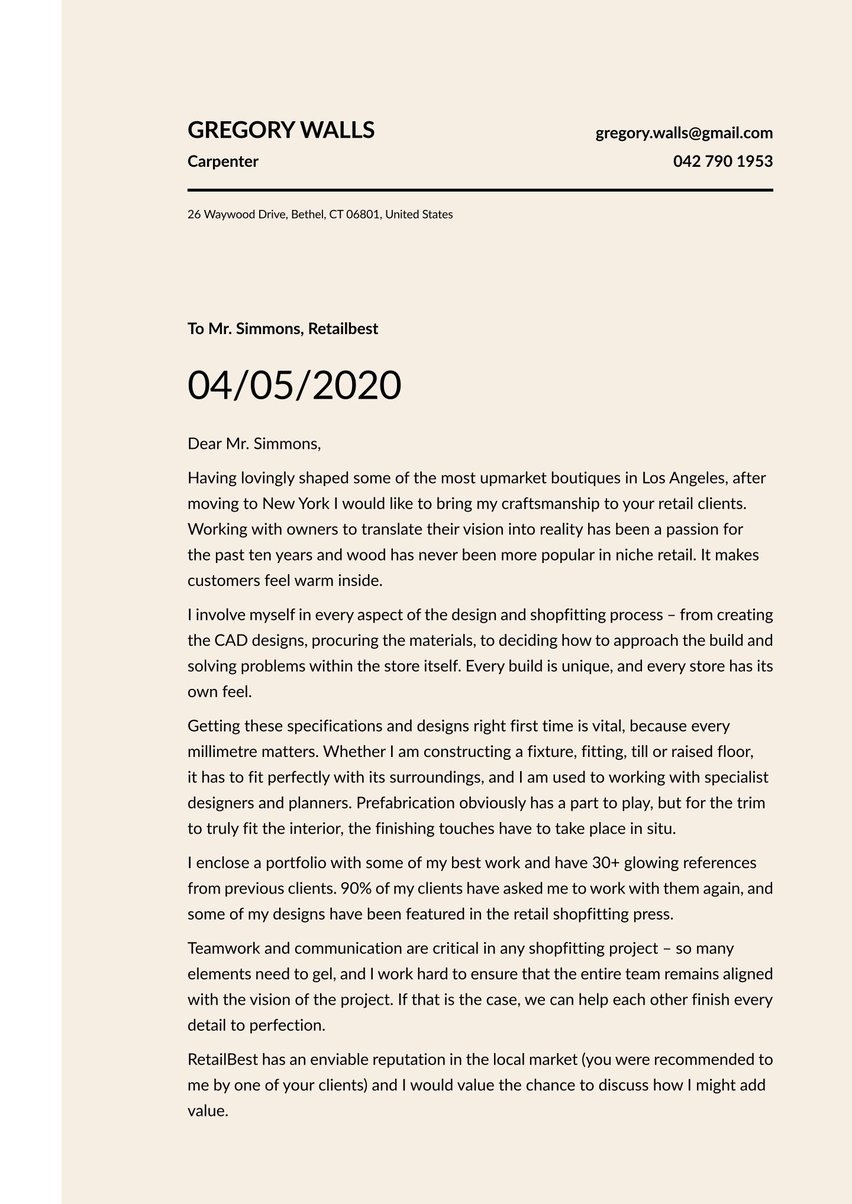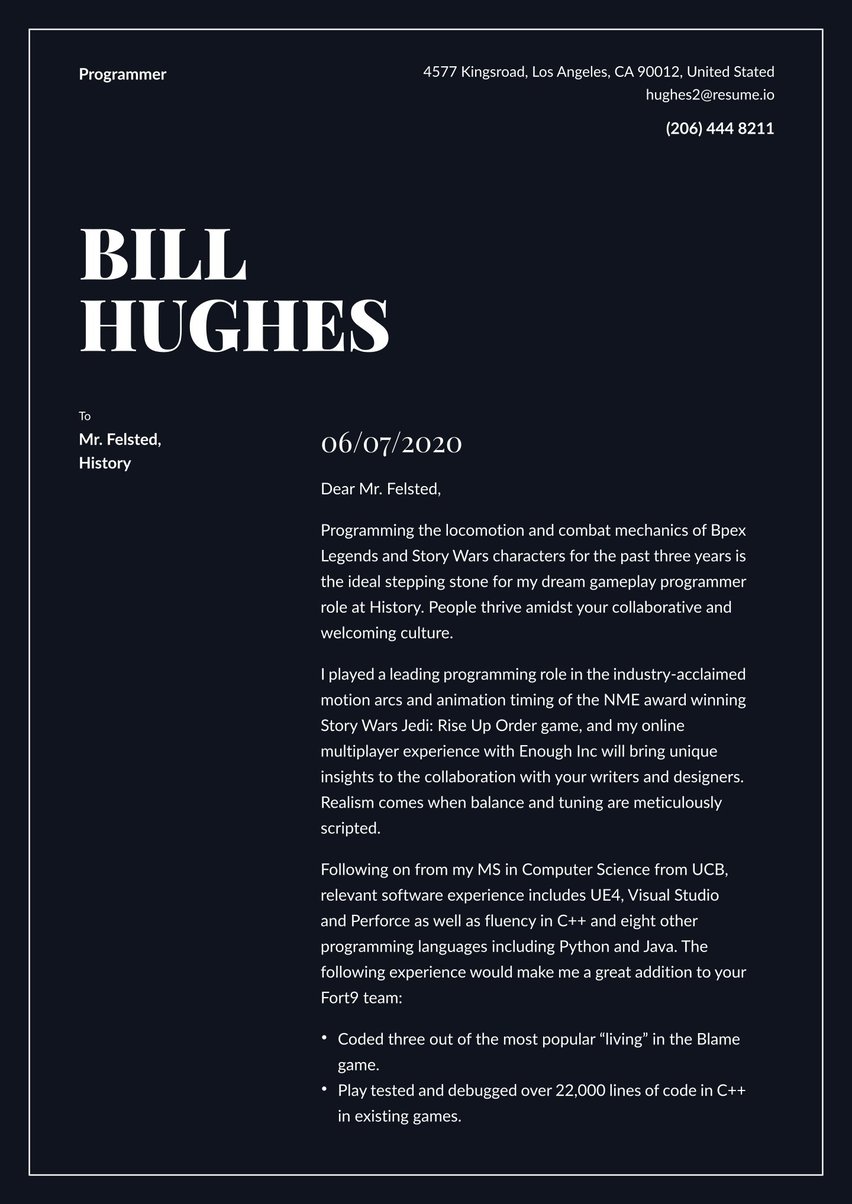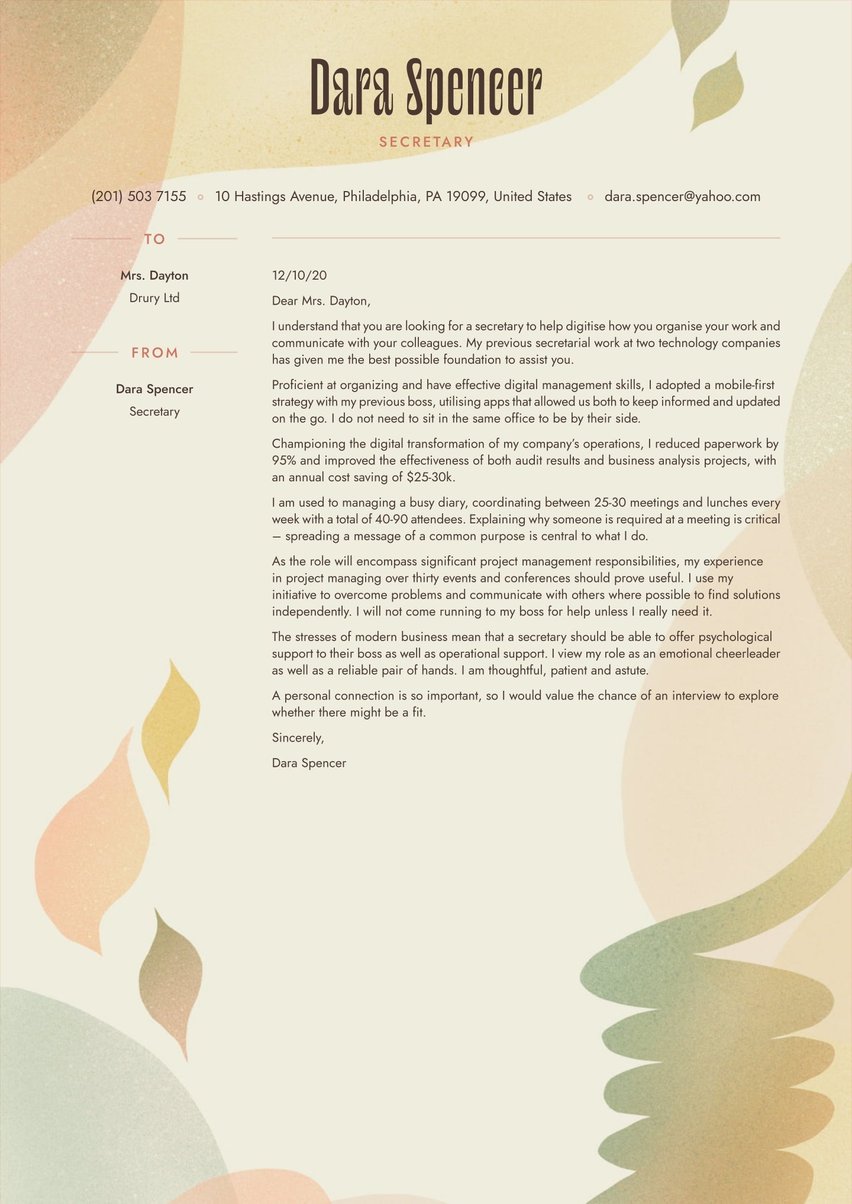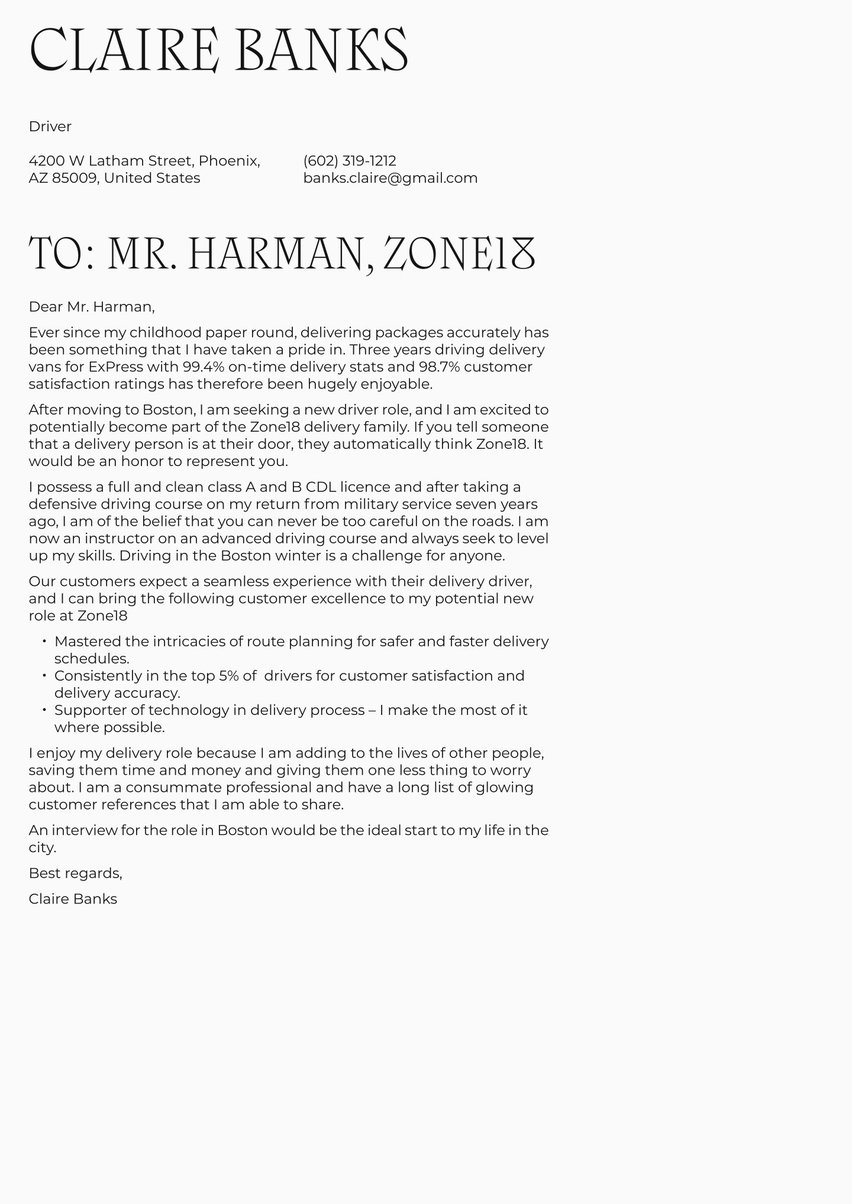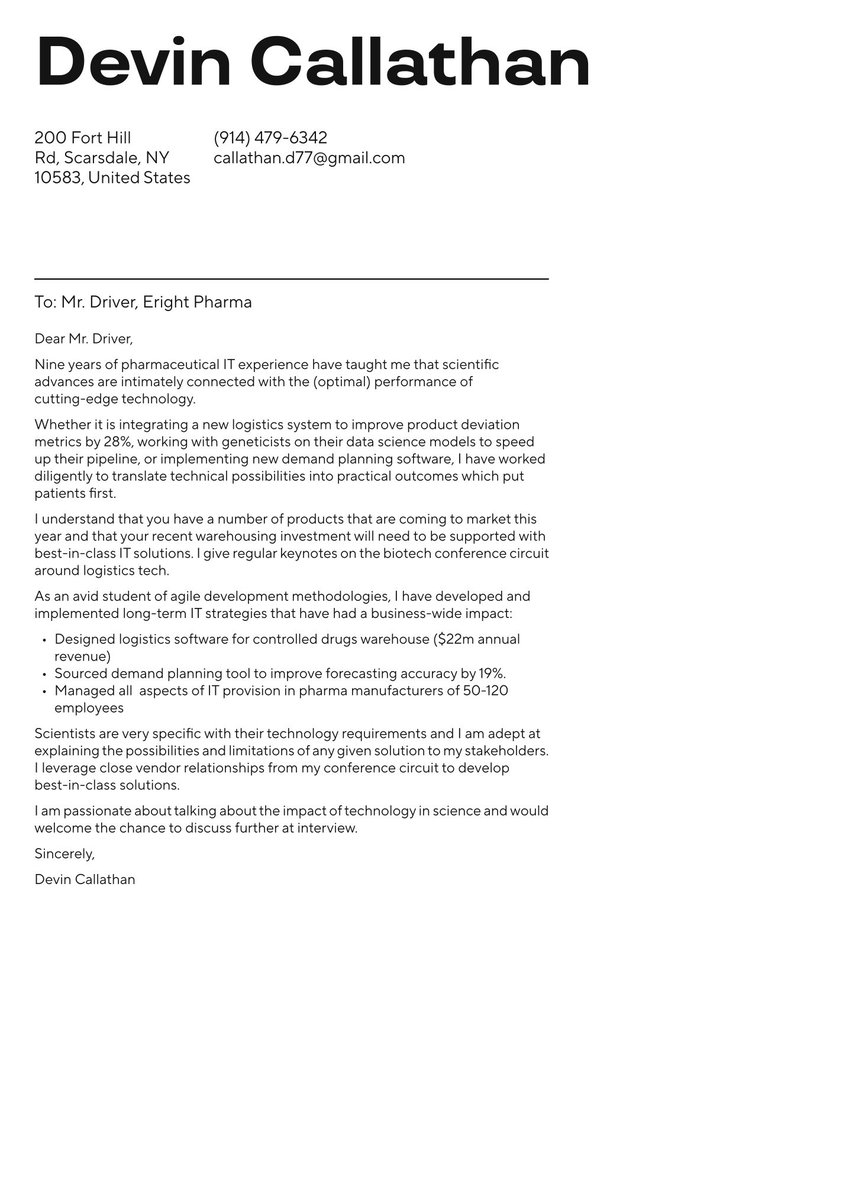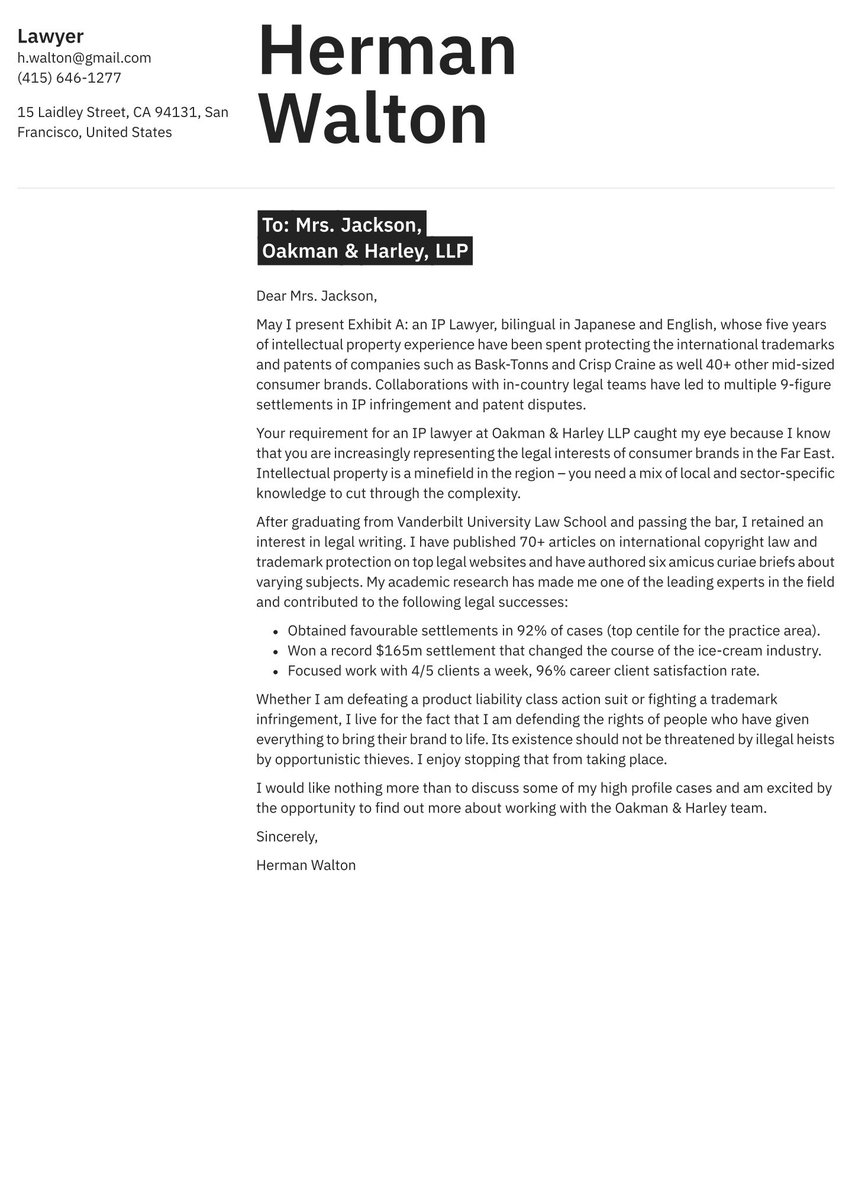What is an apprenticeship and why do you need a cover letter to increase your chances? The short of it is: a cover letter allows people to glimpse your dedication and personality. It’s what adds some humanity to an otherwise dry application.
It’s what shows you care more than other candidates and deserve a chance to learn and work. While you can use this scheme to get hands-on experience, there's more to apprenticeships than construction work. In 2022, the Bureau of Labor Statistics (U.S.) reported that there were 600,000 active apprentices in a wide selection of industries.
Apprenticeships are unique opportunities that allow you to expand your skill set, get real-life work experience and get paid at the same time. So how do you prove you’d make a great apprentice? It all starts with the perfect cover letter. This apprenticeship cover letter example and our adaptable cover letter sample will:
- Explain the purpose behind crafting the perfect cover letter for an apprenticeship
- Give free examples, samples and templates to model your cover letter on
- Offer concrete tips to land an apprenticeship with no experience.
Before we jump into the best practices for writing a knock-out cover letter, it’s worth taking some time to polish your resume first. Luckily, we’ve got you covered. Check out our compilation of 180+ cover letter examples for guidance on specific careers.
Need more inspiration before you start writing your apprenticeship cover letter? Have a look below and get inspired by these related application letters:
Apprenticeship cover letter sample and purpose
Primary purpose
One of the biggest mistakes applicants make when writing their first cover letter is writing without purpose. There’s a big difference between a cover letter that simply exists and one that has been deliberately crafted to land you your dream job. This apprenticeship cover letter example is all about showing you how to write the latter no matter which field you plan to enter.
So what is a cover letter? This document accompanies your cover letter and should be kept to a maximum of one page (200 to 400 words). While your resume has dedicated sections for your experience, education and skills, your cover letter allows you to discuss only the most relevant and convincing reasons why you’d make a great apprentice. It shouldn’t be used to simply repeat the information on your cover letter, but rather to add to it.
A great cover letter should use a professional but friendly tone of voice. As an apprentice, your willingness to learn and your passion for your chosen craft are of the utmost importance. Beyond that, you can highlight previous experience in the field or explain the reason why it’s always interested you.
What if the apprenticeship job application DOESN’T require a cover letter?
Online applications often mention whether a cover letter is appreciated or not, but many apprentices find their expert trainer locally or through other connections. In that case, it can be hard to tell whether you need to write a cover letter or if a simple resume will suffice.
However, even a short, yet thoughtful cover letter can significantly increase your chances of landing the position. That’s why, unless you are specifically asked NOT to, we recommend writing and submitting a cover letter to every apprenticeship you apply for. The time it takes to craft this simple document will pay dividends when a mentor notices your attention to detail.
Professional writing is an important element of a great apprenticeship cover letter, but it’s not the only thing to consider. You’ll also have to pay attention to formatting. Fonts, sizes, colors and other design elements can help present you as a polished candidate who is serious about the apprenticeship. If you don’t have graphic design experience, a free cover letter template may be able to simplify the process. You can find all sorts of useful formatting information in our overall guide on cover letters.
Secondary purpose
When a journeyman or expert tradesperson takes on an apprentice, he or she wants to know that they’ve chosen someone motivated, respectful and quick on their feet. That’s why many trainors carefully scrutinize an apprentice’s application and cover letter to make sure they have the right qualities.
Your cover letter’s job is to help you pass that test and prove yourself, possibly before you’ve even met the person who will be teaching you. In that sense, your cover letter helps you open doors by introducing yourself and creating a personal connection with your employer.
When the applicant pool is crowded, your cover letter can often be the deciding factor between getting the apprenticeship and watching it go to someone else. Since the majority of apprentices don’t have much experience in the field to which they’re applying, their resumes can often look pretty similar. Your cover letter is what can make you stand out and level the playing field between you and the other applicants.
Tailoring your cover letter for success
Writing a cover letter is a good first step, but there’s one more thing you’ll need to do to truly maximize your chances of landing the position. Tailoring your cover letter means customizing it for each and every role you apply to.
Take a moment to familiarize yourself with the company website, social media and the job posting. What about the company or tradesperson made you want to work with them? Was it their commitment to customer service? Their strong reputation? Their innovative practices?
Answering these questions along with your motivations for entering the particular field can usually leave you with enough to tailor your cover letter. If you have examples of previous work experience, make sure to choose the most relevant ones that demonstrate the necessary skills for what you plan to learn in the apprenticeship.
Best format for an apprenticeship cover letter
The anatomy of a great cover letter remains largely the same no matter which trade you plan to study. In this section, we’ll walk you through the writing process from start to finish. These sections make it easier to know you’ve included all the necessary information to create a convincing cover letter. Here are the key components:
- The cover letter header
- The greeting / salutation
- The cover letter intro
- The middle paragraphs (body of the letter)
- The ending paragraph (conclusion and sign-off)
You can find free example sentences and even more detailed tips in our overall guide on cover letters.
This apprenticeship cover letter example is a good foundation to develop your own application:
28/11/20
Dear Mr. Beckett,
Having completed a one-year plumbing traineeship alongside my technical college qualification, I am now looking for an apprenticeship in the Bay area. I’m seeking to continue my learning and work towards my plumbing examinations and National Inspection Testing Certificates.
I averaged sixteen hours a week of practical experience in my previous trainee role and I am searching for an apprenticeship that will allow me to increase that to 3-4 days a week. I know that you have a 100% record in apprentices passing their examinations, so, for me, Pipemaster Plumbing is the best place to complete my training.
I am proficient in every aspect of heating and ventilation installations, both in a residential and commercial setting, having worked on over 40 projects over the course of a year. I took part in the product selection and procurement and ensured cost-effective and timely supply of whatever was required for the job. I have a full and current driving license and am used to popping to the trade stores for emergency replacements.
I particularly enjoy full bathroom projects and find the challenge of working with plumbing systems a satisfying one. Every bathroom is unique, and I participated from the CAD design stages to the final installation. Translating a client’s vision into a real end product is immensely enjoyable.
I am used to working hard and doing the mundane jobs that more senior plumbers would rather not tackle. I respect that their time should be spent on the truly skilled labor, and I am more than happy to spend the day grouting tiling or cutting pipes to size. I am a good listener, dedicated team player and a careful and skilled technician.
I would welcome an interview or trial to share my skills and passion for the sector and love of learning.
Sincerely,
Theresa Bennett
Cover letter header
Your cover letter header occupies the very top of your cover letter page and is therefore the most visible section. It serves two important roles. The first is to label your document with the necessary personal data like your name and contact information. The second purpose is to create attractive and attention-grabbing formatting to set your document apart – more on that below!
The goal of this section: Keep your name and contact information at the recruiter’s fingertips, create professional and polished formatting to make your cover letter stand out
Align document styles!
Professional presentation can sometimes be just as important as good writing. If you want to take your application to the next level and truly increase your chances of landing the position, you may want to consider aligning document styles. By creating matching cover letter and resume headers and page layouts, you’ll give your application a distinct look and feel that makes it stand out from other candidates.
Since apprenticeships often take place in skills-based fields, you’ll want to avoid going over the top with colors or modern designs. A simple, clean resume and cover letter layout is usually the best option. If you don’t feel like fighting with a word document, then you may want to consider matching the cover letter and resume templates which can make the layout process much easier.
Cover letter greeting
Your cover letter greeting is a small but mighty section focused on helping you make a personal connection with your potential employer. Make sure to choose the greeting that’s most appropriate for your relationship.
For example, if you’ve never met the expert trainer before, “Dear” followed by the appropriate salutation and last name is likely the most appropriate choice. If you’ve already gotten to know the person you’ll be working with, you may opt for “Hello” or “Hi” and a first name instead.
Note that our cover letter sample sticks with the tried-and-true "Dear."
The goal of this section: Establish a respectful tone and a personal connection based on whether or not you have an existing relationship with the employer
The importance of names and addressed greetings
Using your potential mentor’s name in your cover letter greeting is one of the most important things you can do to show that you’re invested in the apprenticeship. In fact, it’s scientifically proven that humans respond well to hearing our own names. But you don’t need research to know that remembering someone’s name can make both parties feel respected.
Since an apprentice works so closely with their trainor, it’s worth taking some time to find the name of the person who will be teaching you. If you can’t find it online, try calling the business to ask. A little extra effort can go a long way.
In the case that the apprentice program involves many trainors, you may have to opt for a general greeting. Try to avoid the generic and cold-sounding “ To Whom It May Concern.” There are many better options including “Hiring Team,” “Company Family,” “Expert Trainor” and “Master Plumber.” Choose the one that makes most sense for the company branding and trade.
Cover letter introduction
Your cover letter introduction is a hiring manager’s first chance to evaluate your skills and motivation. Therefore, it’s important to avoid a boring introduction and to get right to the point. A relevant anecdote, interesting statistic or a bit of background can all make for a strong introduction. Just make sure to keep this section concise and professional without being bland.
The apprenticeship cover letter example below spells out exactly where the writer is in their career and where they want to go.
The goal of this section: Create an attention-grabbing opening sentence or two that draws the employer into your cover letter and encourages them to keep reading.
Dear Mr. Beckett,
Having completed a one-year plumbing traineeship alongside my technical college qualification, I am now looking for an apprenticeship in the Bay area. I’m seeking to continue my learning and work towards my plumbing examinations and National Inspection Testing Certificates.
Cover letter middle part (body)
The middle paragraphs of cover letters are vital to applicants' success. Since this is the largest section of your cover letter, you’ll finally have the space to expand on your relevant skills and personality traits. The STAR method can help you organize any previous experience you have into short anecdotes. First, briefly describe a Situation, then the Task required. Next, explain your Action and the positive Result it created.
If you don’t have any anecdotal experience in your field, you can still discuss your reasons for wanting to learn the trade, your potential contributions to the employer and your strongest personality traits that would make you a valuable asset.
The goal of this section: List any examples of previous experience using the STAR method, describe potential contributions, motivations and skills.
I averaged sixteen hours a week of practical experience in my previous trainee role and I am searching for an apprenticeship that will allow me to increase that to 3-4 days a week. I know that you have a 100% record in apprentices passing their examinations, so, for me, Pipemaster Plumbing is the best place to complete my training.
I am proficient in every aspect of heating and ventilation installations, both in a residential and commercial setting, having worked on over 40 projects over the course of a year. I took part in the product selection and procurement and ensured cost-effective and timely supply of whatever was required for the job. I have a full and current driving license and am used to popping to the trade stores for emergency replacements.
I particularly enjoy full bathroom projects and find the challenge of working with plumbing systems a satisfying one. Every bathroom is unique, and I participated from the CAD design stages to the final installation. Translating a client’s vision into a real end product is immensely enjoyable.
I am used to working hard and doing the mundane jobs that more senior plumbers would rather not tackle. I respect that their time should be spent on the truly skilled labor, and I am more than happy to spend the day grouting tiling or cutting pipes to size. I am a good listener, dedicated team player and a careful and skilled technician.
How to close an apprenticeship cover letter (conclusion and sign-off)
Now that you’ve given all the strongest evidence to show that you’d make a great apprentice, it’s time to finish your letter politely and positively. A call to action (CTA) can help you do just that. In one sentence, express your interest and enthusiasm for the apprenticeship and invite the employer to contact you. You may even leave your phone number or email again here.
Then, end the letter with the most appropriate signature based on the employer’s tone. “Yours sincerely,” “Thank you” or “Best regards” can all work well.
The goal of this section: Create an effective Call to Action, finish your letter with a polite and respectful signature.
I would welcome an interview or trial to share my skills and passion for the sector and love of learning.
Sincerely,
Theresa Bennett
Writing psychology: the power of storytelling
As you begin the job search, you may be wondering, “Well how can I prove I’m the ideal candidate for the position if I’ve never done it before?”
This is the dilemma of all entry-level job seekers, students and apprentices. But you’re not bound to be an apprentice forever – there is a way!
The first thing you want to do is brainstorm a list of all the skill sets and personality traits you possess that would make you a great candidate for the apprenticeship in your chosen field. You can start with the examples in the section above. Then ask yourself what about the field truly interests you.
Once you’ve reflected and collected information about yourself, you’ll want to weave it into a short story. It doesn’t need to be fancy or complicated – just a simple narrative that explains who you are and why you possess the right qualities to handle the apprenticeship.
According to neuroeconomist Paul Zak, our brains are actually hardwired to respond with empathy and action to well-crafted stories. Your story might explain how you first heard about the field, how you knew it was right for you, or what you hope to gain from your experience as an apprentice. And don’t forget to weave in what you can offer the company in exchange for their time and effort forming you – a positive attitude, great work ethic and helping hand.
Storytelling in action
Here’s a simple example to help guide your apprenticeship cover letter.
Instead of:
I’m writing to apply for the position of carpentry apprentice at your company. I am a motivated student, a hard worker and a generally positive person who wants to become an expert carpenter.
Try:
My interest in carpentry began before I even knew what the field entailed. As a kid, I found myself tinkering with my dad’s woodworking supplies whenever he wasn’t watching. In high school, I proposed a project to build miniature bookshelves in our local park. Now I understand that my eye for detail, focus and self-motivation would serve me well as a carpenter.
Basic mistakes in an apprenticeship application letter (and how to avoid them)
Entry-level candidates like apprentices often run into a set of similar pitfalls. Avoid these common errors and your application will quickly move to the top of the rankings.
- Spelling and grammar mistakes: Typos and errors of this nature quickly make you look like a poor communicator. Luckily these mistakes are easy to avoid. Make sure to use spell check and ask a friend to proofread your application before you submit.
- Irrelevant experience: Most apprenticeship candidates won’t have loads of experience in their field – and that’s OK! But you shouldn’t resort to hobbies and clubs just to flesh out your cover letter. Instead, choose your top skills and personality traits and focus on why those would make you a great candidate for the apprenticeship.
- Poor tone: Entry-level candidates often struggle to find the balance between humbleness and over confidence. The trick is to appear proactive and passionate without sounding entitled or demanding. Gratitude and willingness to learn are key.
- Unprofessional formatting: Your visual presentation says a lot about what type of applicant you are. For an apprenticeship, your formatting shouldn’t be fancy or overcomplicated. A simple cover letter template can help you create the right balance of white space to text with just the right number of design touches.
Apprenticeship cover letter with no experience: tips and strategies
For any apprenticeship position, there are a few key qualities you’ll want to convey.
- Willingness to learn: A teachable spirit and the ability to follow instructions are perhaps the most important skills for any apprentice. Demonstrate a willingness to learn and teamwork skills through your tone of voice and your passion for your chosen trade.
- Motivation: An apprentice should be an active participant in their education. Your motivation can come across in your positivity, your previous work experience or your background.
- Work ethic: Tradespeople work long hours and often respond to emergency customer calls. The ability to keep moving even at the end of a long day is essential not only to your success as an apprentice but also to your success in your future career.
- Focus: An eye for detail and a sharp memory are important in any skilled trade. Make sure to highlight these qualities in your past experience or in your reasons why you’d make a great apprentice for the profession.
Key takeaways
- A good cover letter is a vital part of a complete application, especially for apprenticeship candidates whose resumes often lack work experience in the field.
- Tailoring your cover letter to the industry and specific company you hope to work for is one of the best ways to boost your chances of landing the apprenticeship.
- Make sure to use the expert trainer’s name in your cover letter greeting to establish a personal connection.
- Keep your letter interesting by weaving your skills and experiences into a short story.
- Make sure to think about good formatting, spacing and fonts. Use a cover letter template if necessary.
Use the Resume.io cover letter maker and cover letter templates to build an amazing cover letter in minutes. Our phrase suggestions and spell-checker will make sure that writing is easy and our stellar designs will help you get noticed. Time to win that dream job!


